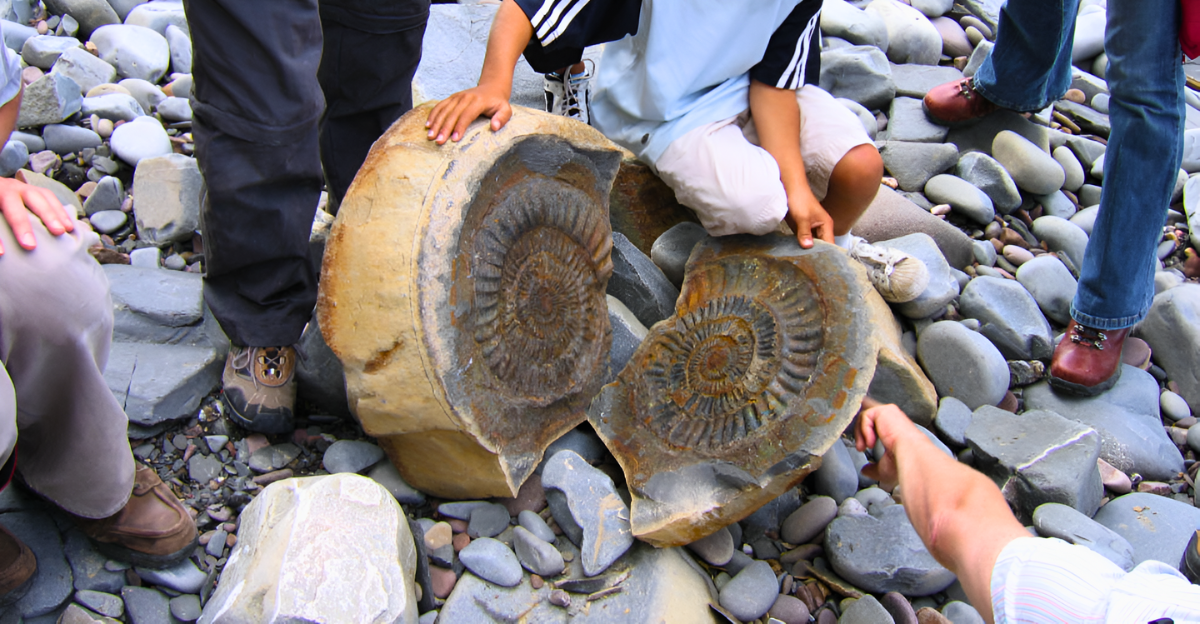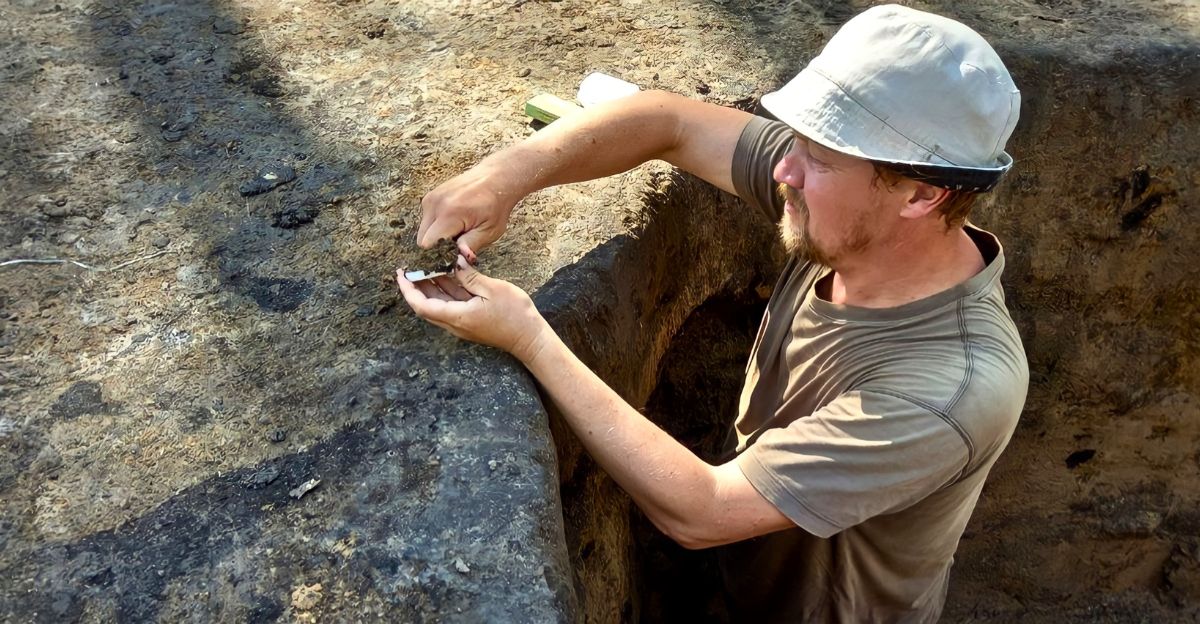
The archaeological community has taken notice of the recent discovery of fossil jewelry inside a Roman grave in northwest Spain. According to experts, this is the first time a fossil has ever been purposefully fashioned and worn as jewelry in a Roman setting.
Beyond the fields of paleontology and classical archaeology, this ground-breaking discovery, a 450-million-year-old trilobite fossil that was shaped and used as an amulet, offers unique empirical proof of the Romans’ interest in the distant past and their fascination with remarkable natural objects.
The actual discovery
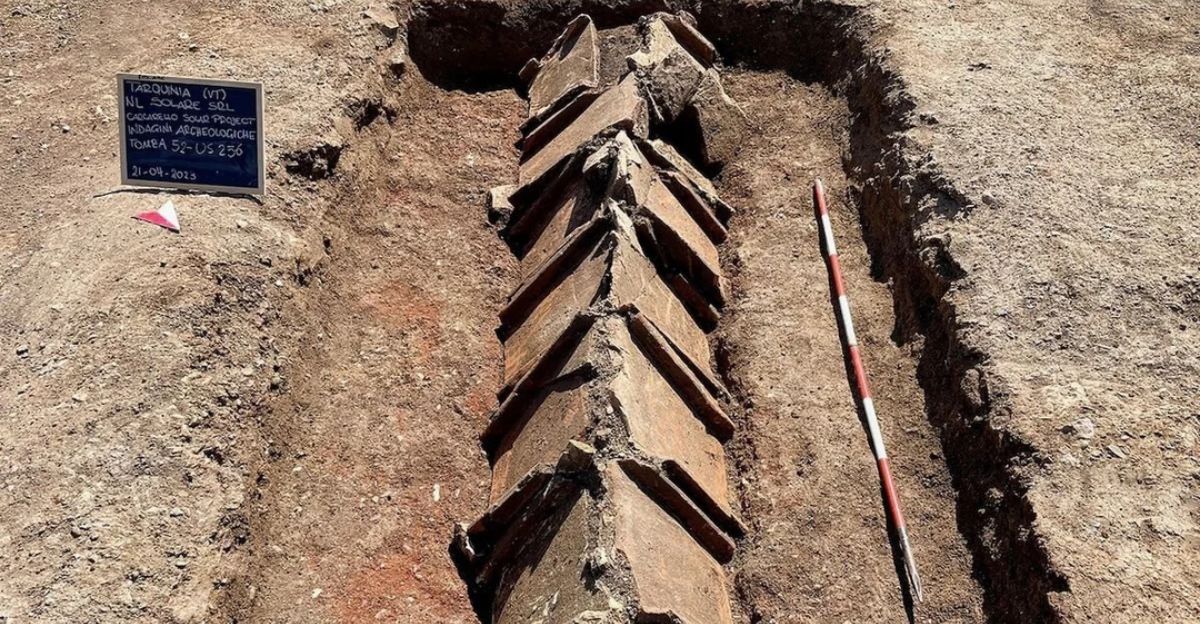
The fossil was discovered in a trash heap close to a prominent Roman tomb at the A Cibdá de Armea settlement. A careful examination showed apparent alterations: the fossil’s back was etched and polished, which probably improved the trilobite’s segmented, armored appearance. This suggests the fossil was used as ornamentation, perhaps set in metal or leather as a bracelet or pendant. Its importance in Roman material culture is highlighted by its setting among imperial coins and opulent objects.
The fossil’s chemical fingerprinting connected it to a source over 400 kilometers away, indicating a sophisticated network of trade or collection, and the significance of the fossil’s aesthetic or symbolic value to justify such transportation.
Why Jewelry Made of Fossils Is So Amazing
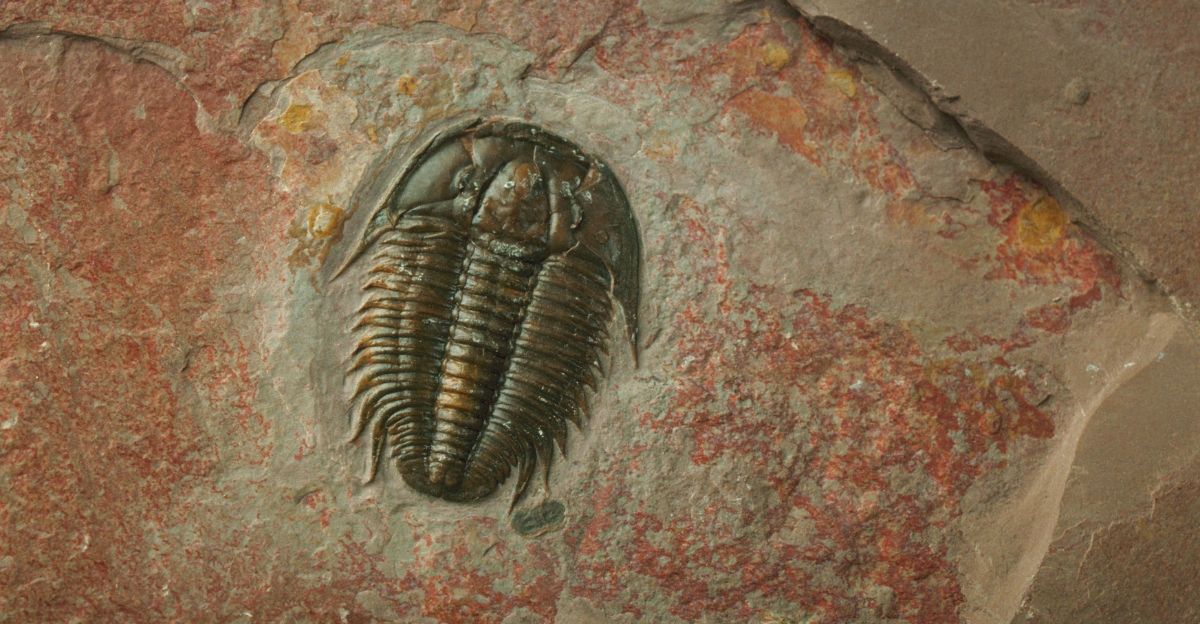
There was almost no tangible proof of prehistoric fossils being incorporated into jewelry by highly developed ancient societies before this discovery. Only ten other instances of purposefully altered trilobite fossils in ancient environments are known worldwide, making such artifacts extremely uncommon.
The Roman Empire’s cultural interest in Earth’s prehistoric past is enhanced by this discovery, which also modifies the timeline for the use of fossils in jewelry. By showing that fossils were intentionally made to convey identity, status, or spiritual protection among elites, it contradicts the preconceived notions of archaeology that they were only geological oddities.
Romans and Fossils: A Complicated Interest
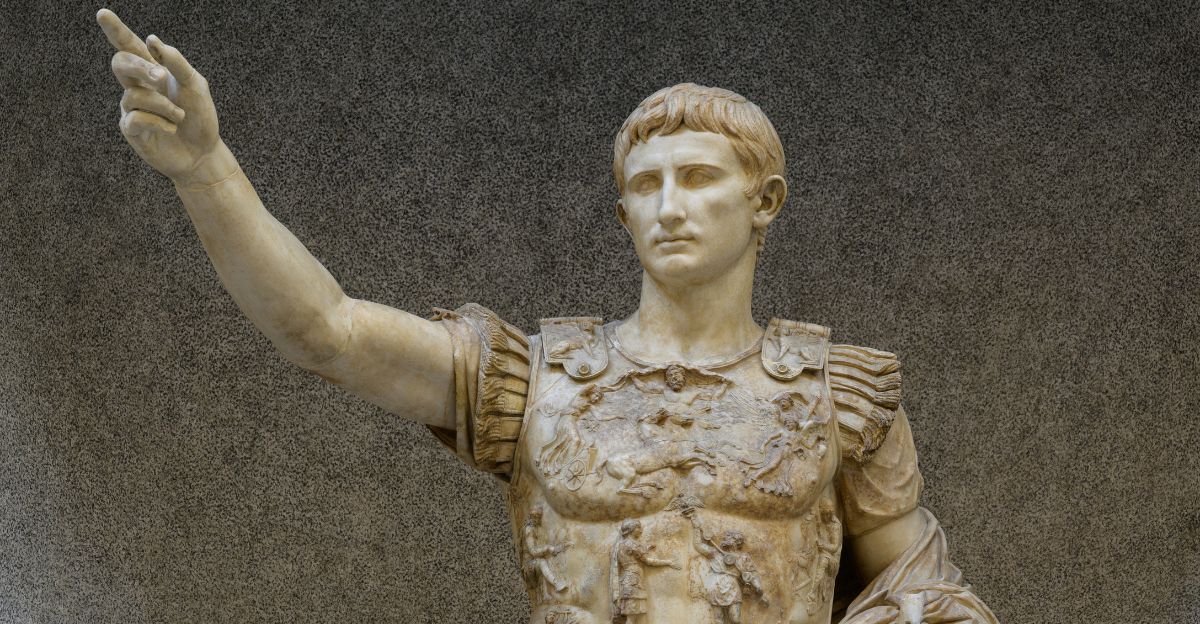
According to historical documents like Suetonius’s writings, Emperor Augustus himself gathered fossils and displayed them for tourists as wonders and possible myth-making materials; the remaining pieces were believed to be the bones of mythical creatures.
The symbolic appropriation of nature’s oldest relics by high-status Romans is directly linked to the use of these fossils in jewelry. Perhaps influenced by early naturalists and proto-scientific thinkers, this fascination reveals a deeper Roman engagement with nature and a philosophical appreciation for antiquity, which gave their material culture additional layers of meaning.
Material Culture Shock: Roman Jewelry’s Variety
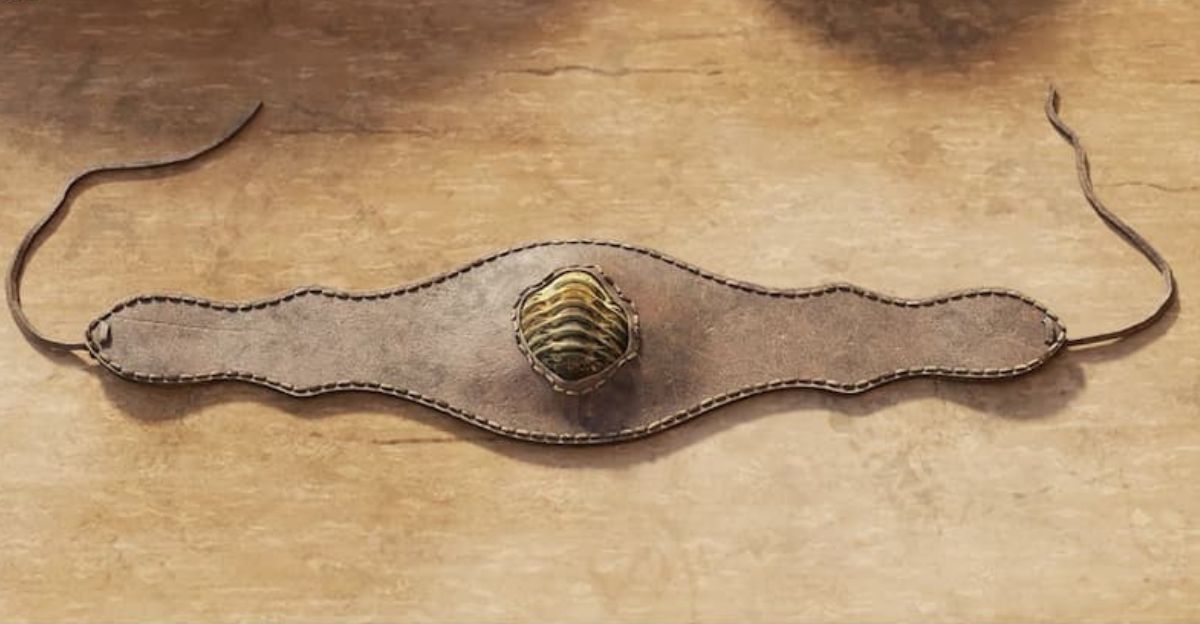
Romans were known for their love of jewelry made of rare and colorful materials, such as jet, colored glass, exotic gems, pearls, and gold. The use of fossils, however, adds a whole new level of complexity, casting doubt on the notion that Romans could only use the resources available through trade.
This fossil jewelry connects spirituality, geology, and beauty. It implies that Romans were not just consumers but also innovative designers who incorporated ancient natural objects into their clothing, thereby enhancing their social standing and their association with the natural and mythological realms.
Rival Storylines—Is This the “First”?
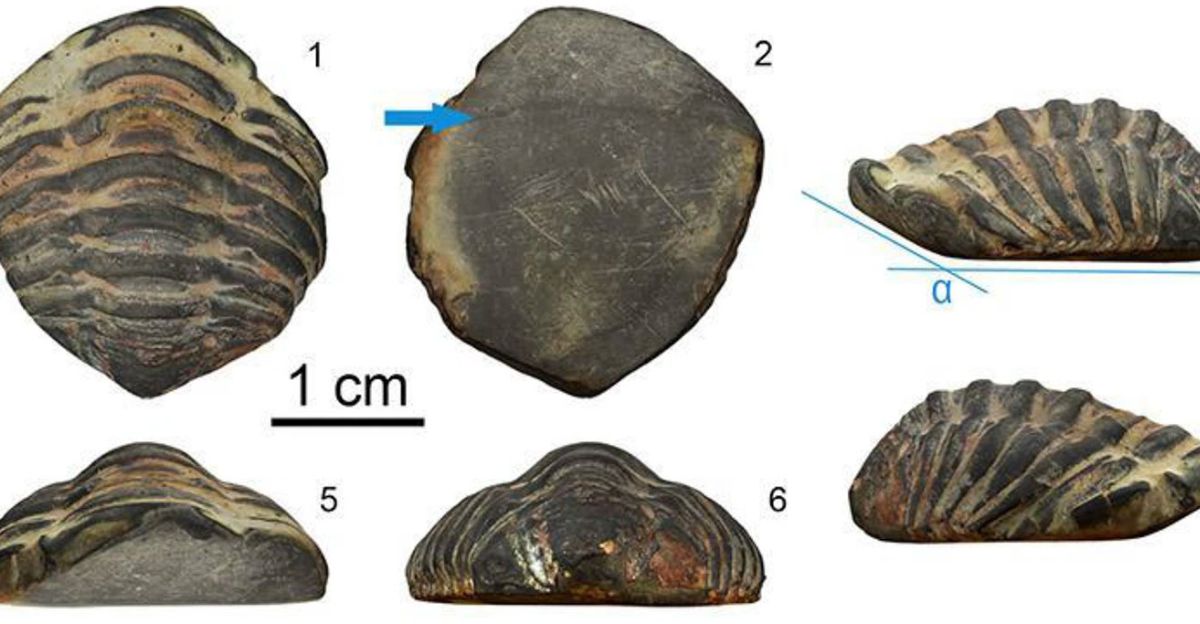
Although fossils were used as ornaments by some prehistoric and tribal cultures, attribution in a complex, urbanized setting such as Rome is unprecedented. The Roman approach to fashion, mass production, and symbolic messaging was not present in earlier societies, as evidenced by the discovery of Paleolithic trilobite pendants from France.
As a result, the Spanish trilobite is the first fossil that was used as jewelry in the classical world. Because it illustrates a change in the use and meaning of fossils from purely decorative or functional objects in simpler societies to symbols embedded within sophisticated cultural systems, this distinction is essential for contextual understanding.
Power of Protection and Symbolism
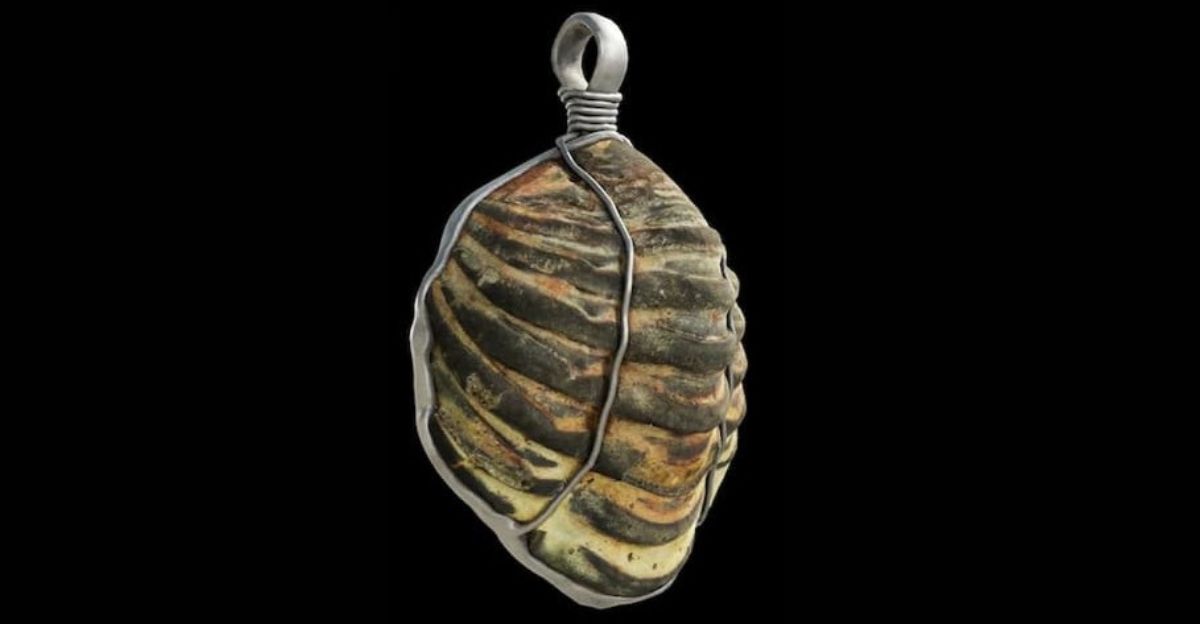
Romans believed that certain items had magical and protective properties; charms and amulets were commonplace. The armored trilobite was a perfect choice for an amulet intended to prevent harm or improve status in the afterlife because it represented protection, tenacity, and a connection to ancient Earth. This interpretation is supported by the fact that it is situated close to a dignified grave.
The Roman aristocracy’s adoption of fossilized animals as protective talismans is consistent with broader Mediterranean customs in which natural objects were thought to channel supernatural forces and provide their wearers with protection, favor, or strength.
Theoretical Ripple Effects: Motivation for Jewelry Production in Large Scale
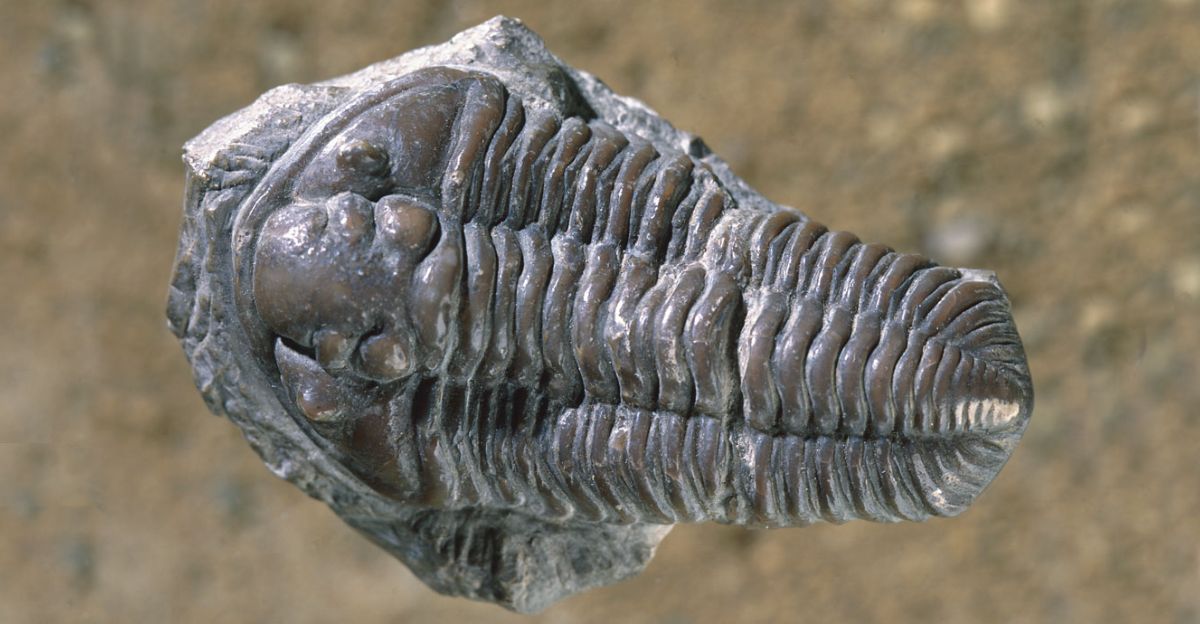
Long-standing archaeological mysteries might be resolved by this extraordinary discovery. “Trilobitenperlen” are glass and jet beads made to resemble the segmented ridges of trilobites, and they were produced by the Romans. The discovery of fossil jewelry supports the theory that real fossils sparked a trend of imitation jewelry for broader consumption by igniting the desire for such shapes among everyday Romans.
By showcasing early industry and branding in ancient jewelry styles inspired by natural history, this mass production and diffusion illustrate how elite tastes influenced broader cultural trends.
The Forgotten Trade in Fossils

A sophisticated fossil trade or collection system, even if unofficially organized, must have existed given the journey from a 460-million-year-old shale bed, approximately 430 kilometers from the grave site, to a Roman settlement. It attests to the Romans’ extensive networks for unusual items deemed both spiritually and aesthetically valuable, in addition to gems and metals.
Such a trade combines commerce with the symbolic economy of status and belief, hinting at ancient economic specialization and the value placed on rare natural artifacts beyond traditional luxury goods.
Roman vs. Other Ancient Jewels: A Comparative Edge
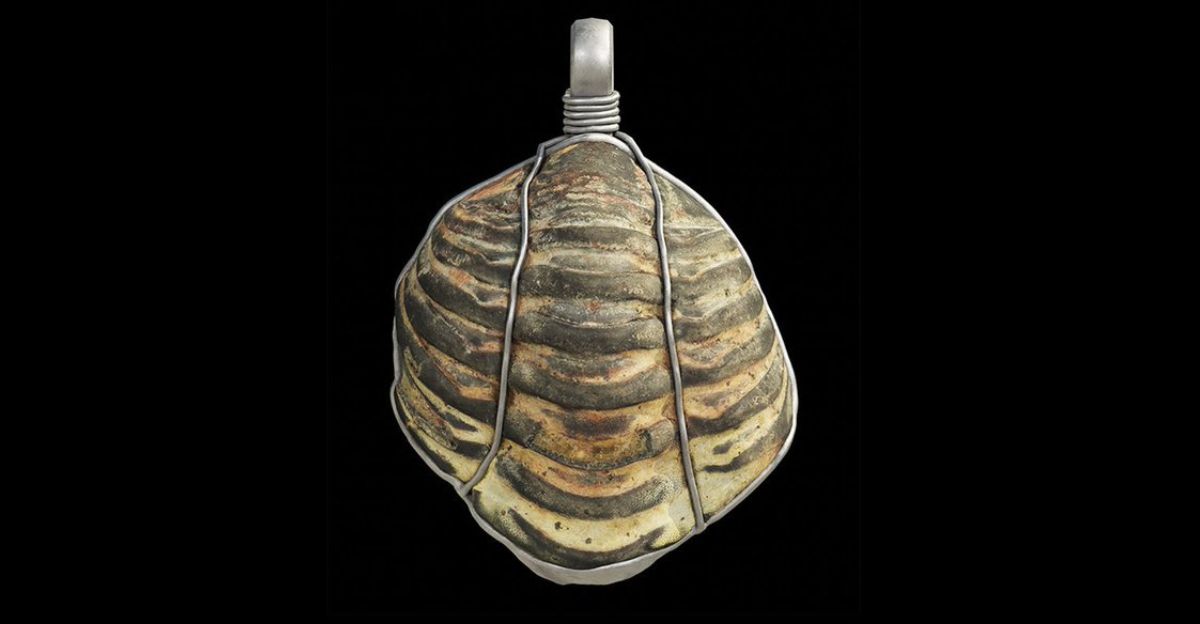
The discovery of fossil jewelry casts doubt on preconceived notions about how the ancient world used its resources. No other civilization is known to have so purposefully and symbolically repurposed fossils for jewelry as has been discovered here in Roman Spain, despite the fact that Egyptians indulged in faience beads, and meteorite iron bracelets have been found in prehistoric Polish burials.
This gives comparative studies of ancient material culture more depth by pointing to a distinctive Roman combination of myth, natural science, and decorative arts that is not found in these other rich but distinct traditions.
Was It Intentional or Unintentional?
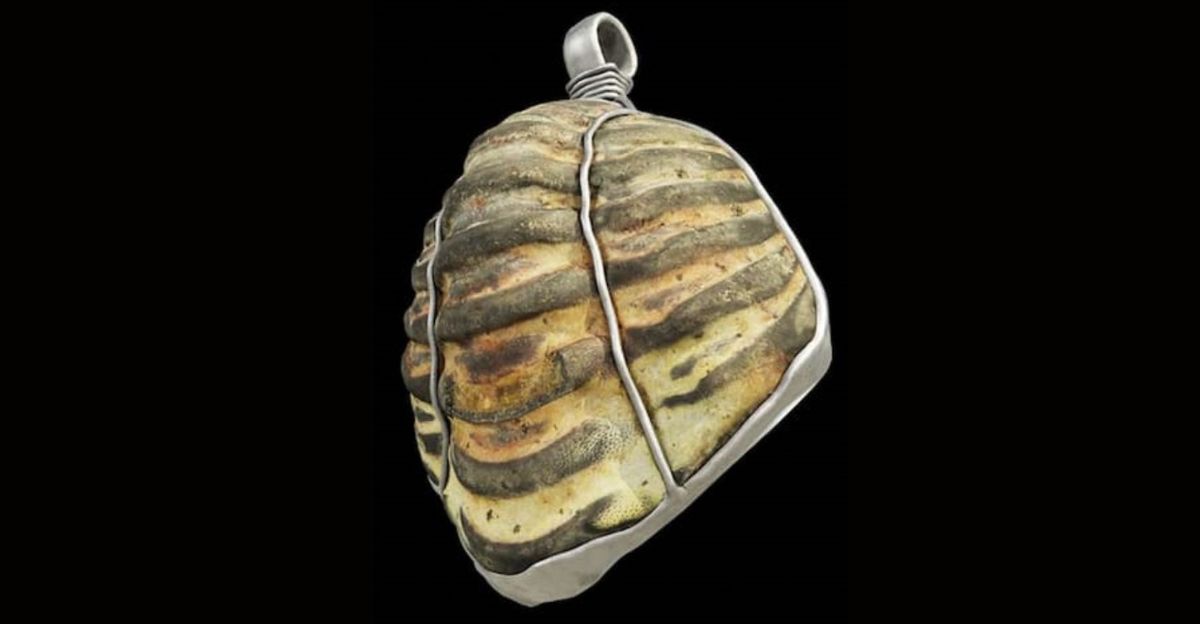
Critics may contend that the jewelry-like shape of the fossil was accidental. However, the fossil’s underside exhibits distinct tool marks and chemical analysis, indicating deliberate shaping and symbolic use rather than a chance inclusion.
The evidence for intentional Roman craftsmanship is reinforced by the jewelry’s find spot, modification patterns, and similarities to mass-produced designs. This viewpoint also calls for a reexamination of other comparable discoveries that might have gone unnoticed or were misunderstood, pushing the field to pay closer attention to subtle clues that point to the early symbolic use of fossils.
Fossils in Contemporary Jewels
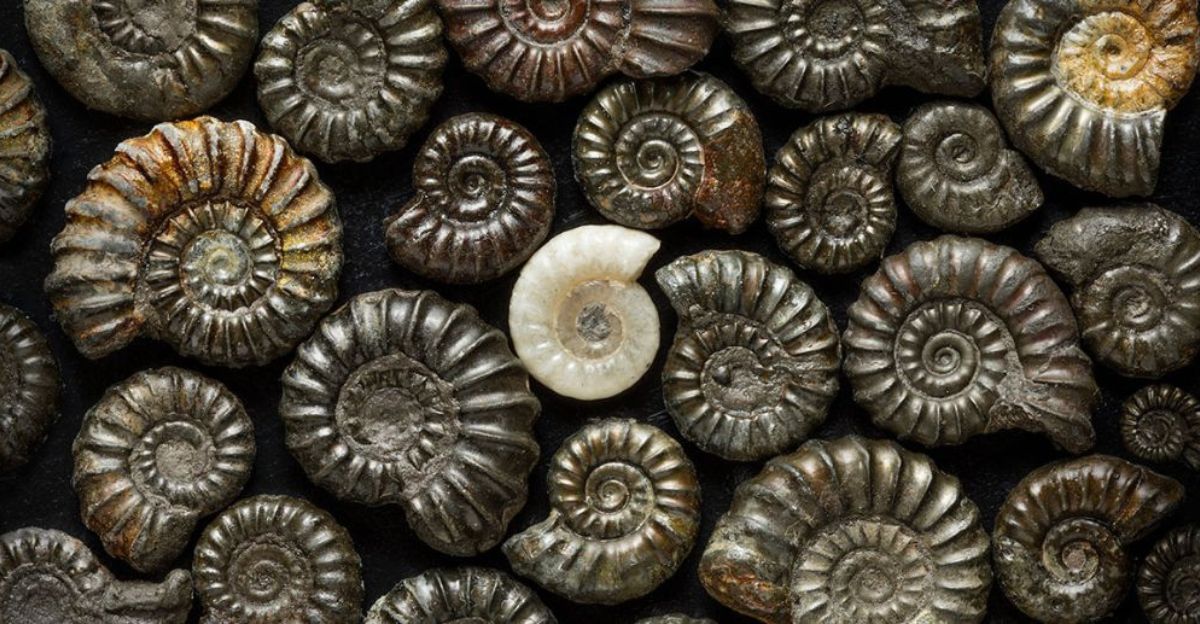
A strong human desire to connect with geological time and natural wonder is reflected in the increasing use of fossils like ammonites or petrified wood by contemporary designers in expensive jewelry.
An idea that is currently thriving in luxury markets worldwide has its roots in the Roman trilobite amulet. This continuity connects ancient craftspeople with modern craftsmanship over millennia, highlighting the fossils’ timeless appeal as representations of tenacity and earthly mystery.
The Significance of Fossils
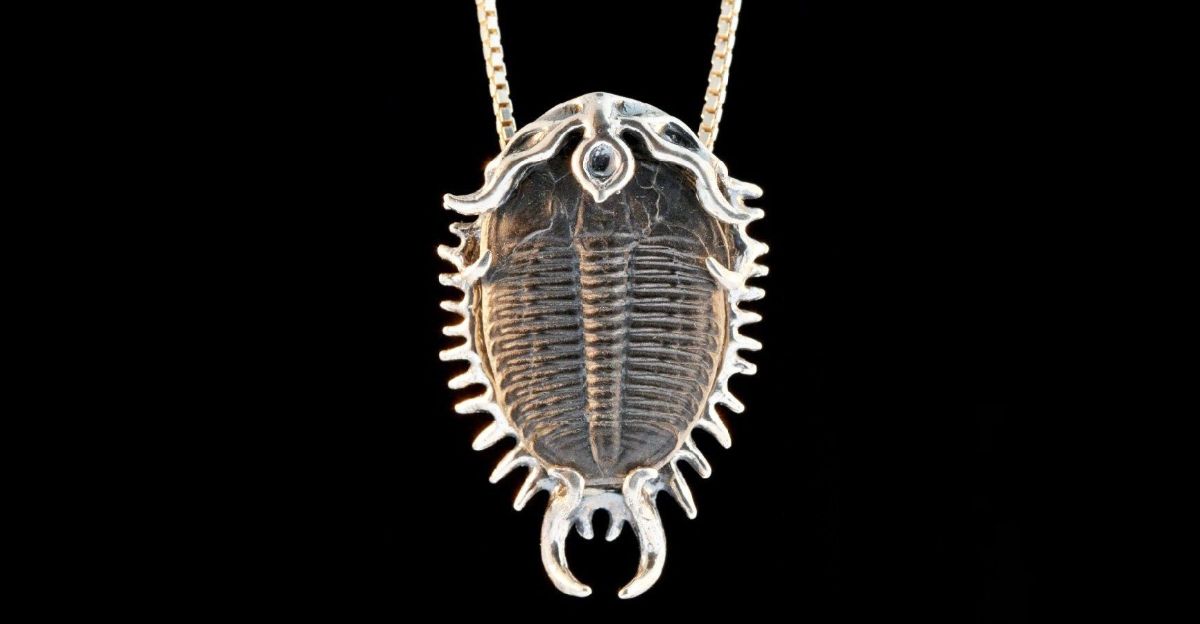
Complex psychology is revealed through the use of a fossil as jewelry. The Romans saw it as more than just decoration; it was a way to assert human agency over a very long period of time and affirm continuity with a world that outlasted even the oldest empires. It would be a personal declaration of tenacity, timeless style, and “earth magic” to wear such an item.
This demonstrates an early manifestation of existential identity expression in which material objects are used as means of addressing issues of history, mortality, and the place of humans in the vast natural timeline.
Investigation and Cultural Knowledge
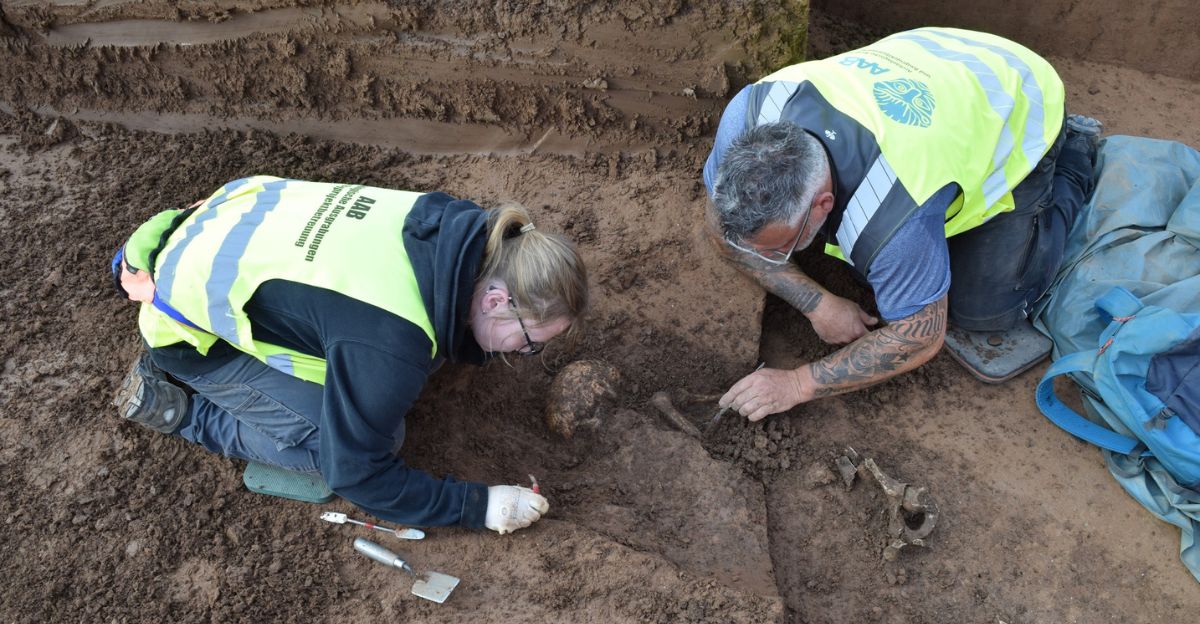
Scholars are already searching other Roman graves and settlements for forgotten fossils, challenging presumptions about trade, craft, and daily life in response to this extraordinary discovery. Museums and collectors may begin reassessing ambiguous items from earlier excavations in light of this new knowledge, potentially rewriting jewelry history.
Our comprehension of Roman social complexity and cross-cultural interaction may be enhanced by a wider reinterpretation of what qualifies as Roman luxury goods and spiritual artifacts.
A Significant Change in Archaeological
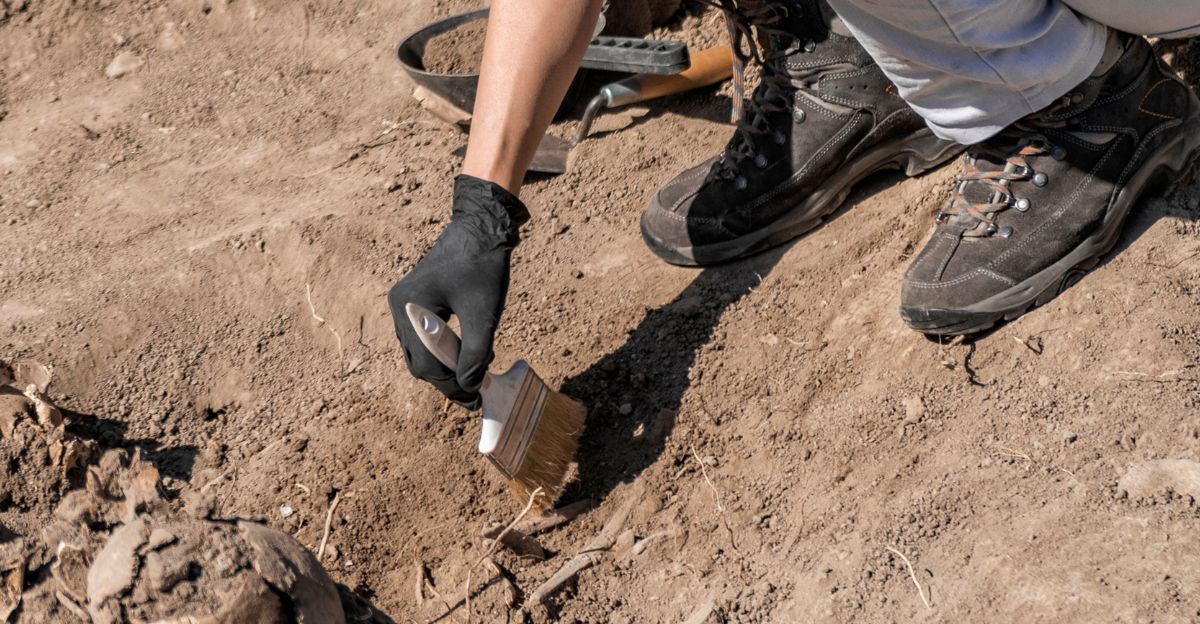
The discovery of the first Roman fossil jewelry in history challenges academics, curators, and the general public to rethink how deep time, human creativity, and cultural symbolism intersect. The Spanish trilobite amulet is far from a mere oddity; rather, it is a quantum leap, demonstrating the Roman determination to use the oldest of the ancient to transcend the present.
Its narrative serves as a reminder that history is dynamic and full of unexpected events that call into question our most ingrained beliefs. This finding highlights the continued necessity of interdisciplinary approaches in archaeology, combining art history, anthropology, and paleontology to understand the intricate stories contained in ancient material culture completely.



